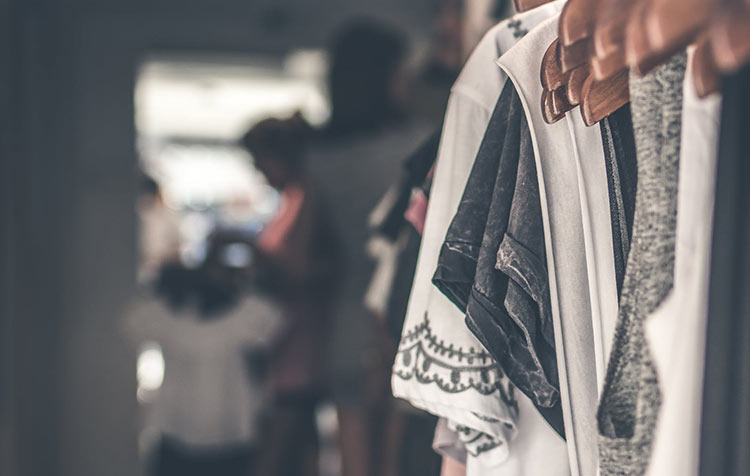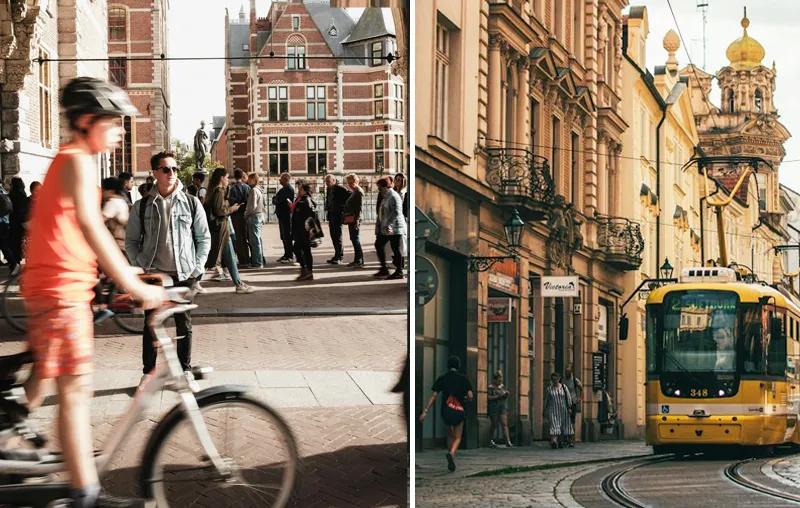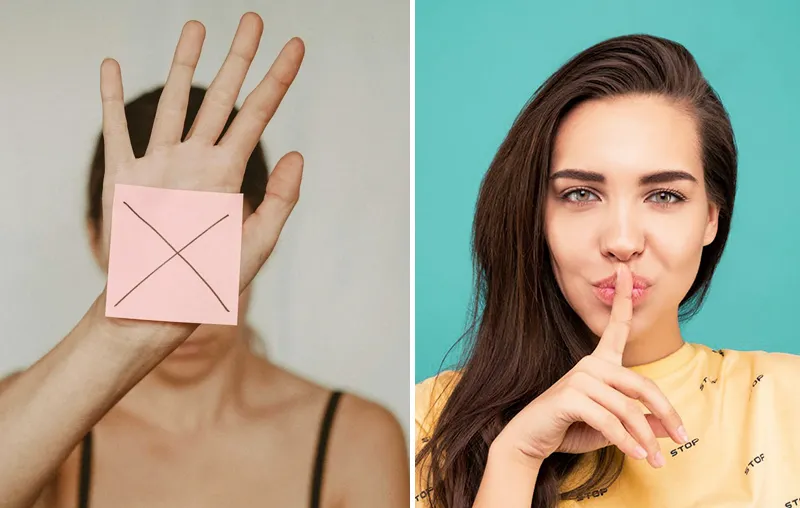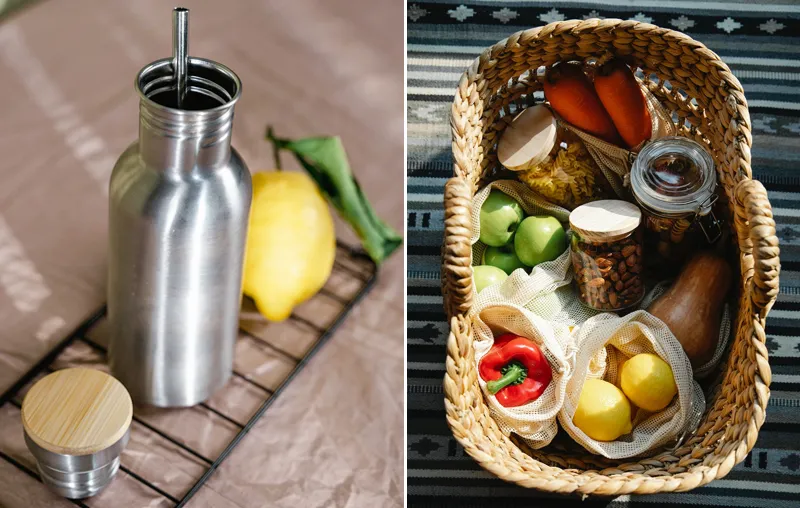Would you like to know more about Slow Fashion and experience a more sustainable approach to fashion? Then you've come to the right place. Because the fast-moving fashion consumption of our Disposable society is the cause of many of the biggest Environmental problems of our time. By being more sustainable with your fashion and consuming it more consciously, you counteract them in your everyday life.
In this article, I would first like to tell you more about the slow fashion movement and its benefits, and then give you the best tips for sustainable fashion consumption. Let's go!
Tip: The topic of clothing also takes an important part in my new Book Sustainable living for beginners one. This is certainly something for you too! 🙂
What is Slow Fashion?
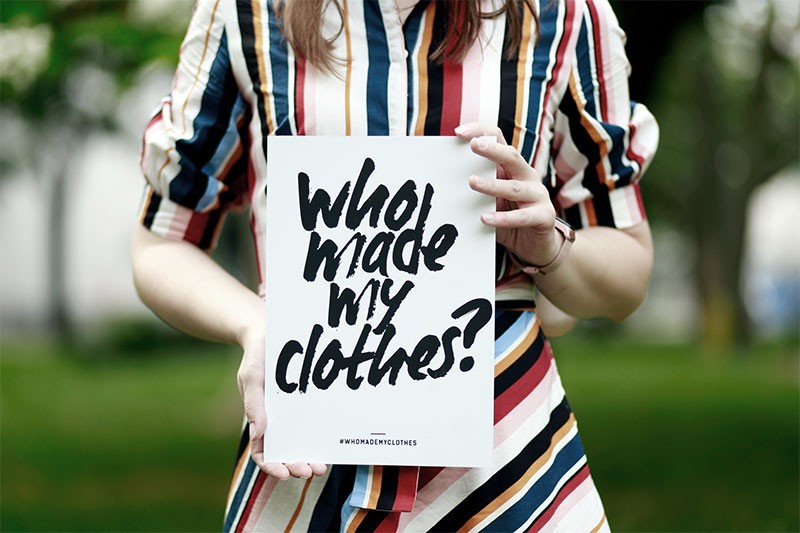
The concept of slow fashion basically describes the sustainable, and conscious fashion consumption. In addition to the consumption of clothing made from environmentally friendly materials and recycled clothing, this also includes, for example, the use of second-hand fashion, the preference for durable and high-quality clothing, as well as the conscious purchase from small and regional fashion labels. In this way, slow fashion slows down the disposable consumption of our society, as more value is placed on existing items of clothing.
Notice: By the way, the opposite is true Fast Fashion - In the linked article you can find out more about fast-moving fashion and the problems it causes in our world.
About the slow fashion movement
As already described, there is one main reason for the existence of the slow fashion movement: fast fashion, which poses major challenges for our society and, above all, our environment. Shopping miles, Bargain prices and new collections every week. Mass instead of class. Cheap and short-lived instead of something more expensive and durable.
At the end of the day, there is as much clothing in our wardrobes as we can't even wear - while elsewhere people have to sew these clothes in undignified conditions or beg for clothes with holes and dirt. In addition, waste water is being discharged into rivers - and clothes that are not needed are burned because it is cheaper than selling them. None of this is fair and it's certainly not sustainable - and that's why the slow fashion movement was born.
Advantages of Slow Fashion
Slow Fashion has basically no disadvantages - Well, maybe for the fast fashion industry. Because where less is consumed, less can be earned. But for everyone else, the benefits are manifold - whether for us humans or for nature.
Here is an overview of some of the advantages of slow fashion:
- Water: The global Water shortage is one of the biggest environmental problems of our time. We can only drink a fraction of the water on earth - the Slow Fashion movement prevents the discharge of waste water into clear rivers and lakes and thus counteracts water scarcity.
- Health: Workers in Bangladesh and other "low-wage countries" have to toil for the fast fashion industry under inhumane conditions. Whether in the fields or in the sewing factory - the slow fashion movement, on the other hand, promotes fair and healthy working conditions.
- Save money: A €5 shirt may be cheaper in the short term, but in the long term it is also worth investing in durable quality goods. So you can rely on sustainable way to save money.
- Waste avoidance: Completely in the sense of the Zero Waste Lifestyle you can also restyle, repair, reuse or upcycle old, worn-out items of clothing.
- Minimalism: By engaging with slow fashion, you will also develop a new, personal awareness. As a result, you learn to fundamentally live more minimalist.
Documentary Tip: If you need even more motivation for more conscious fashion consumption, be sure to watch the movie The True Cost an. Also under sustainable documentations you will find these and many other documentaries to motivate you to be even more environmentally conscious in your everyday life.
10 Slow Fashion Tips to Buy Fashion Sustainably
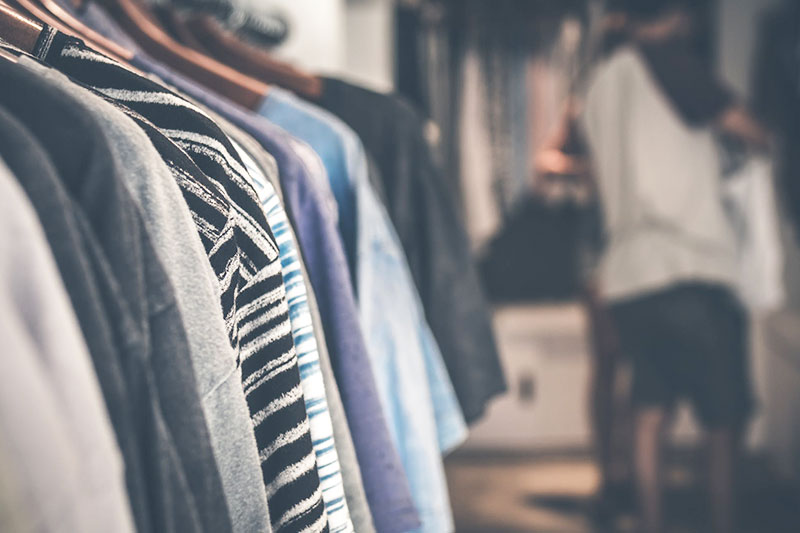
So how can slow fashion be practically integrated into your everyday life? I would now like to answer this question by giving you some tips for a more sustainable approach to fashion. I'll start with a few tips for buying fashion before moving on to everyday tips.
1. prefer fashion from sustainable material
If you can't avoid buying new fashion, you should make sure that it is made from environmentally friendly materials, such as Organic cotton, Linen, Hemp or Organic silk consists of. Leather, for example, is rarely produced fairly these days.
In the article Is leather sustainable? to find out more.
2. regionally produced clothing
Take a look at the label of a sweater to find out where it was made. In the spirit of slow fashion, make sure you're targeting fair and environmentally friendly clothing. Short transport routes you can expect, for example, from fashion brands that produce locally and regionally. If the label on the collar says "Made in Bangladesh", your inner alarm sirens should be going off.
Tip: What applies to clothing naturally also applies to food. Be sure to read the articles Seasonal shopping and Regional shopping to find out why this is so important for a sustainable everyday life.
3. organic labels for certified sustainable clothing
Environmentally friendly materials, regional production and only a few "fashion seasons" a year - sustainable fashion labels with these environmentally conscious characteristics are now sprouting up like mushrooms - and that's a good thing. However, most of them are very small and need support in order to make a name for themselves on the global fashion market. For example, I think the following labels are worth supporting Bleed and Greenality.
Question: Which fashion labels do you find particularly cool because they are sustainable - and why are they sustainable?
4. fair trade seal on clothes
Before you buy fashion, you should take a look at the seals. The IVN Best Seal For example, natural textiles whose entire supply chain, from the cultivation of the fibers to the finished T-shirt, is fair for everyone involved and without the use of chemicals. Then there is the GOTS seal, the seal Standard 100 of Oeko-Tex, Bluesign and Cradle to Cradle, as well as the Fairtrade seal. They all help you identify sustainable clothing faster.
Seal like the "PETA-Approved Vegan" Seal also indicate that a product is vegan. You can then definitely rule out animal suffering.
Speaking of animal suffering: Be sure to check out my post about the best animal welfare organizations and find out how you can support them.
5. second hand purchase
One of the main characteristics of slow fashion is second-hand fashion. Does second-hand still sound old and dusty to you? Then it's time for an update! Absolutely unique items, for example, are waiting to change hands. This way syou conserve natural resources and you also save money. And as second-hand fashion is becoming increasingly popular, there are more and more stores where you can buy it. On the Internet, second-hand shopping works at Kleiderkreisel.de or on comparable platforms.
6. vegan clothes
As already mentioned, you can recognize vegan garments by the "PETA-Approved Vegan" seal. Vegan fashion is free from animal material, such as wool, leather or Fur. These are the things that can be identified as animal material at first glance. But the buttons on a jacket can also be made from horn, for example. By choosing vegan clothing, you are playing it safe. An important tip about the slow fashion movement.
Notice: Now that was a lot of tips for buying sustainable fashion. But of course that's not enough! The aim must be to buy less! The following tips will help you do this.
7. exchange clothes
Another important point should not be forgotten when it comes to slow fashion. How about simply swapping clothes you've discarded for fashion pieces that you like? Pretty cool, isn't it?
I must admit that I have never been to a "Clothes Swap Party" was - but there's sure to be one near you. As a guest, you bring clothes that you no longer wear and simply swap them for other items that you like. This makes it even easier to swap clothes and everyone is happy in the end.
8. fashion out and lend!
Need a new dress or a smart suit for a special occasion? Then why don't you just borrow it? There are numerous online portals and of course stores near you where this is easily possible. You can also borrow or lend clothes from friends so that nobody has to buy anything new.
9. repair, restyle or partially use used fashion
How about turning a boring T-shirt into a completely new piece? For example, by adding a small makeover? This way you can breathe new life into a shirt that you've grown tired of. Don't know how to sew? Then just learn or take your shirt to a tailor - what's wrong with that? 🙂
Tip: In the article about Recycling fashion you can find out how a young fashion label upcycles old garments.
10. capsule wardrobe - choose better and buy less
Yes, of course! Before you throw your money down the drain and buy new fashions that you don't even like that much, you should pay more attention to the selection. The principle of the so-called Capsule wardrobe limit the items of clothing you own to the bare essentials without losing elegance. Simply by opting for versatile, easily combinable and, ideally, timeless fashion. In this way, you save a lot of money and ultimately have a clearly arranged closet with fashion that you can match to many different styles.
11 Appreciate and care for fashion in the closet
If you have too much, you forget to appreciate what you have. Especially if your closet is already quite full, you have an infinite number of possible combinations at your disposal. It's also worth airing out your clothes regularly and washing them as gently as possible. By appreciating and caring for what you already have, you save the new purchase and conserves natural resources.
12. quality instead of short-lived
Slow fashion focuses on quality and not quantity - quality instead of quantity! Cheap shirts and sweaters are usually washed out after a few weeks and the first threads are already coming loose. As it was so cheap anyway, the garment often ends up in the bin or the old clothes collection. It's better to leave the cheap shirt behind and opt for a high-quality, well-made shirt for a few thalers instead. Then you'll get something out of it forever. The spares your nerves and also saves you a lot of money on constantly buying new cheap shirts.
13. rescue and upcycle useful material
Slow fashion thinks more long-term. Whether it's large pieces of fabric or buttons from an old shirt - many things can still be reusewhen you can no longer do anything with the actual item of clothing. How about turning your holey, dusty checked shirt into one or two usable drying cloths for the kitchen? Or save the buttons as a replacement for another shirt? There are so many ways to give these things a new lease of life.
Tip: I can give you recommend this free e-book from Mona.de. In it, you'll find valuable tips on how to recycle used clothing, more background information on upcycling, and plenty of DIY projects to copy.n.
14. dispose of unusable clothing sustainably
You'll know if you no longer need an item of clothing when you haven't worn it for months, but it's still gathering dust in your closet.
The used clothing container seems to be a good place to go for discarded fashion - but clothes often don't end up where you might expect them to as a consumer - instead, textile markets in Africa are ultimately even at risk because the clothes are sold off there by subcontractors. Instead, you can still buy wearable goods at Second hand fashion stores or via eBay Classifieds to the people who can use them.
Textiles absolutely full of holes and unusable are best disposed of with household waste or at recycling centers.
Slow Fashion - the sustainable approach to fashion!
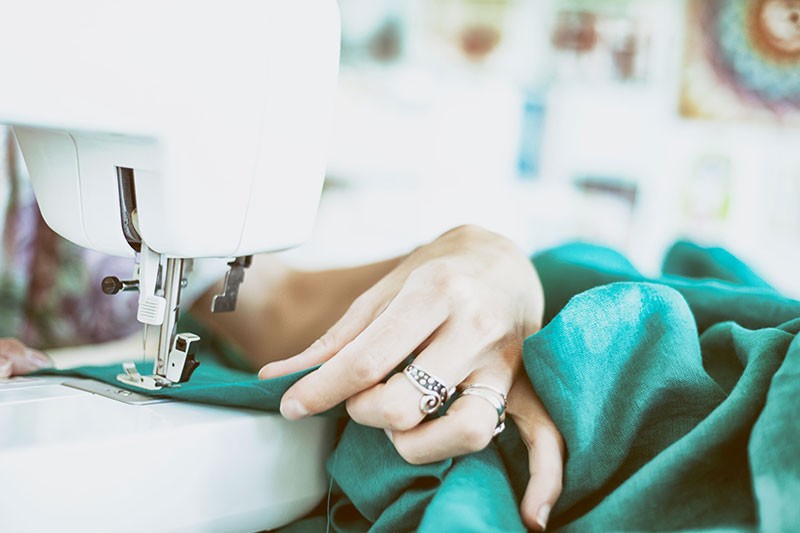
The slow fashion movement should inspire everyone - because it protects us and our environment and puts the brakes on the greedy fast fashion industry. I hope that with this article I have been able to show you the great value that slow fashion has for a fundamentally sustainable society. sustainable life has. Learn to appreciate your existing fashion, to exchange and repair it before you buy new fashion. And if buying new is the only option, make sure it's made from natural materials and under fair conditions.
Do you have any questions, further tips or experiences with slow fashion that you would like to share? Then please leave a comment below this post.
Stay sustainable,

PS.: Just have a look at the Blog about sustainable living over. Maybe the Article about greenwashing something for you? Have fun reading!

